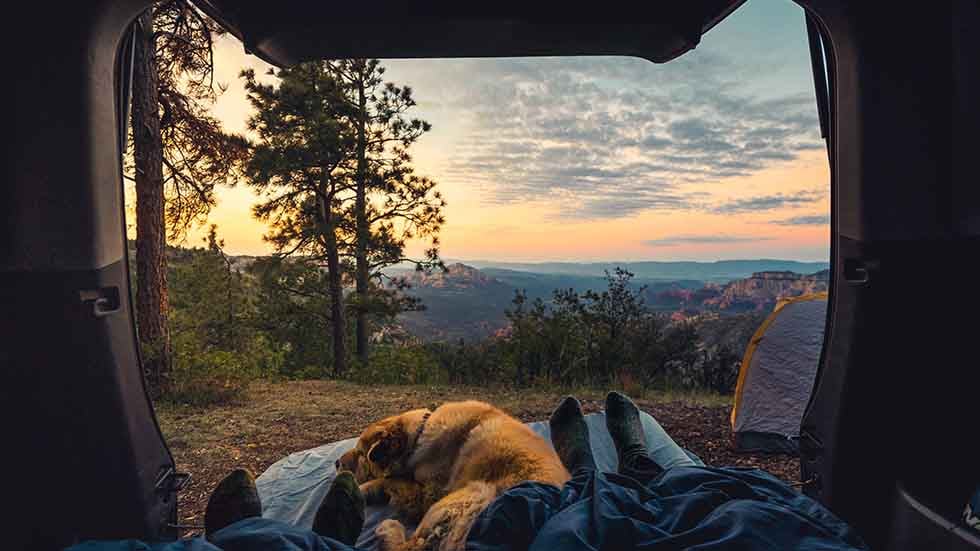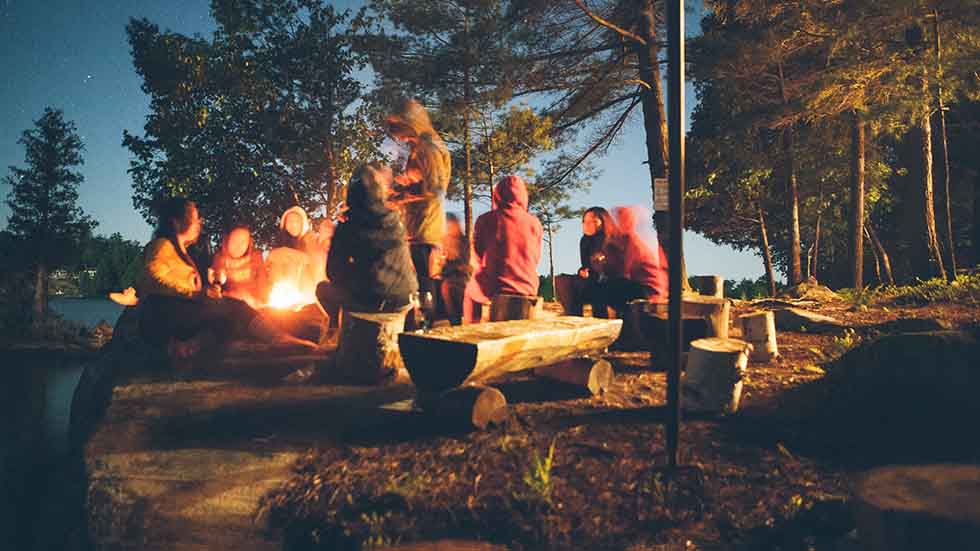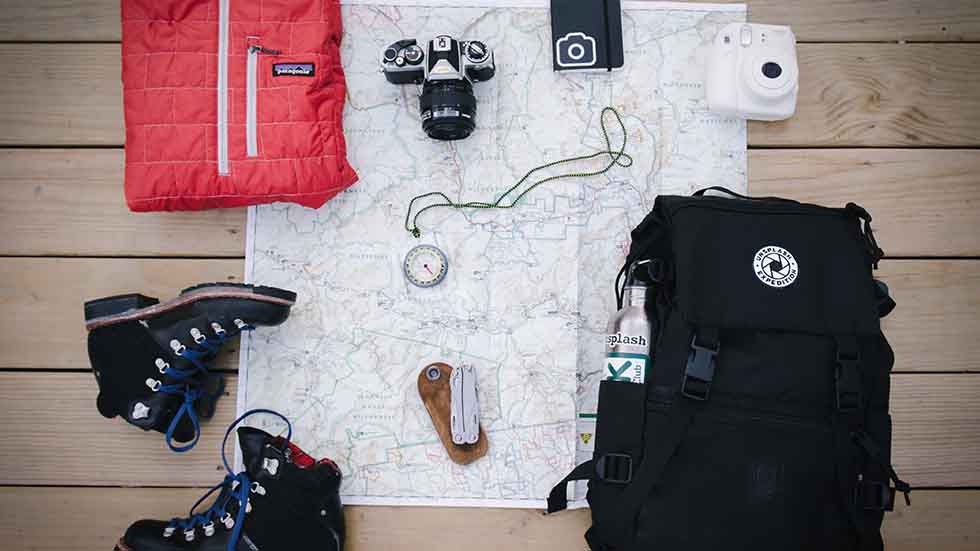The best outdoor experiences start with a great plan. When it comes to camping a little planning can go a long way. If this is your first time camping, the entire process may seem a little overwhelming, but it doesn’t have to be. Planning is actually half of the fun!
Here’s everything you need to consider when planning a camping trip, including how to decide when and where to go.

Choosing the best time for your trip
When you begin to plan, timing is the first thing to consider. The weather and season can have a huge impact on every other aspect from your destination to what you need to pack. Whether it’s wet, cold, or sweltering hot, weather extremes can lead to a very unpleasant trip.
So, when’s the best season to camp? It depends. Places like Olympic National Park get 150 inches of rain each year, with few rain-free days in the spring. On the other hand, Joshua Tree National Park and Death Valley National Park are located in the Southwest Desert. The weather is quite pleasant at both parks in springtime but is miserable during the summer when the temperature hits the triple digits.
The season can affect your trip in other ways, too. If you’re planning your trip in the summertime, you’ll want to keep in mind that many popular camping destinations are super crowded whenever kids are off school. If you’re looking for a quiet, peaceful trip, consider timing your getaway in the off-season.
Check out websites like Reserve America and Hipcamp to find weather conditions and reviews for hundreds of campgrounds throughout the U.S. Be sure to consider free days at national parks if you want to save a little money. Everyone’s priorities are different, so plan your trip according to what’s most important to you.
Choosing your destination
From desert to rainforest and backcountry to national parks, the options for camping are virtually limitless. Whether you want to stay close to home or you’re willing to travel, you’ll also want to be thinking about your destination as you plan the timing of your camping trip.
The United States offers a diverse variety of camping landscapes from forests near cozy little towns, plains in the Midwest, to oceanfront and cliff camping on the Pacific coast, or beach and swamp camping in Florida. And, let’s not forget about camping by a hot spring or near gorgeous waterfalls!
If you want to stay close to home, your local area probably has some awesome camping spots, too. While many camping destinations are accessible by car, others may require boating or backpacking in. Choosing your destination is a lot of fun, so get the family together and do some research online to help you decide where you want to go.

Plan your camping activities
While you’re thinking about the timing and destination of your trip, you’ll also want to think about what activities you would like to have available. Do you want to spend your time relaxing or would you rather be active and swim, fish, hike, mountain bike, or do some rock climbing?
Many campgrounds will offer hiking, biking, and running trails. Some will have pools or lakes for swimming. Whatever style of outdoor adventure you’re looking for, make sure you choose the right season and location to accommodate those activities.
Consider who will be camping with you
Will you be camping solo, with a group of friends, or family? Considering who will be camping with you will have a huge impact on the success of your trip. Not only does the size of your group play into what type of campsite you’ll need, but it also affects how much food and other essentials you’ll need to pack.
Many campgrounds accommodate large groups while others are geared more towards small family groups. If you’ll have little ones with you, car camping is probably a better choice than a backcountry destination you have to backpack all of your gear into. However, backpacking is a fantastic way to camp for solo campers, couples, or intimate groups of friends.

Reserve your campsite
Once you’ve chosen the perfect time and destination for your trip, reserve your campsite before you move forward with your plans. This is crucial because popular campgrounds can fill up quickly—especially in the summer and on weekends.
When you make your reservation, be sure to confirm all the important details. Do you need permits to hike or climb in the area? Is your campsite pet friendly? Does the campground have any group size or age restrictions? Are the activities you want available during the time of your trip? Will firewood, ice, and other necessities be available close by? Asking these important questions now will prevent disappoint later.
Rent your camping gear
Now that your campsite is reserved, it’s time to rent your gear. Arrive Outdoors has everything you’ll need for any season, no matter what type of camping trip you’re planning. From tents to keep you dry to sleeping bags to keep you warm, they’ll deliver premium gear from top brands right to your door at significant savings. Simply send it back using the prepaid return label and drop it off at any FedEx location when you’re done.

Packing for your trip
Now that you’ve got your destination and gear all worked out, you’re ready to pack for your trip. Packing clothes that can be layered is a good way to ensure that you’re prepared for all types of weather. Create a camping menu and pack your food around it. If you have little ones with you, don’t forget about comfort items such as pillows, stuffed animals, games, books, and snacks.
Conclusion
Planning a successful family camping trip is all in the details. Following the steps in this guide will ensure that you’ve considered all of the most important factors. Now, it’s time to sit back and enjoy the great outdoors!

